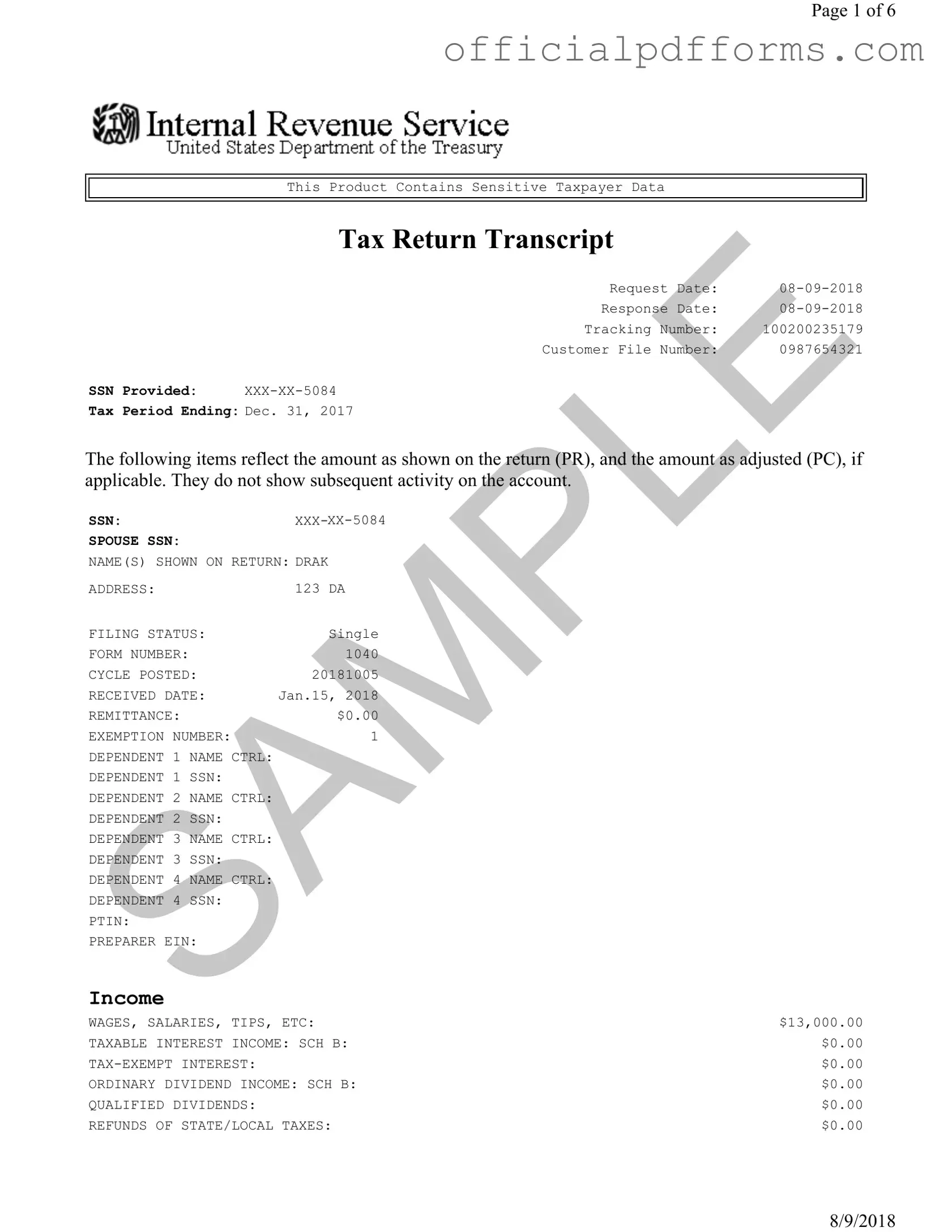Fill in a Valid Sample Tax Return Transcript Form
A Sample Tax Return Transcript is a document provided by the IRS that summarizes key information from an individual's tax return. It includes details such as income, deductions, and tax credits as reported on the original return. Understanding this transcript can be crucial for various financial and legal purposes.
To fill out the form, please click the button below.
Access Form Online
